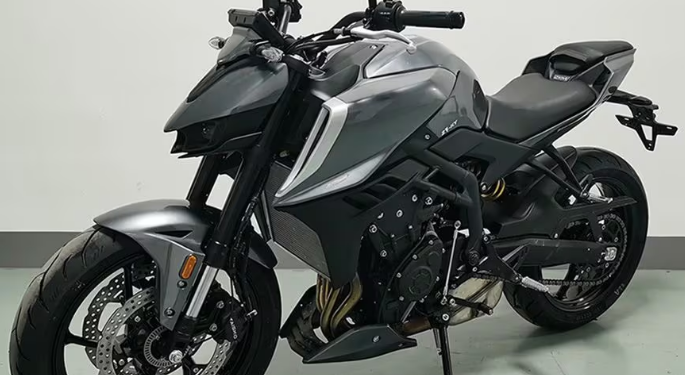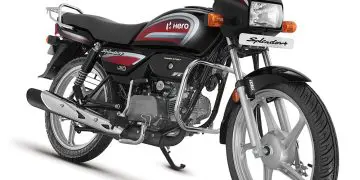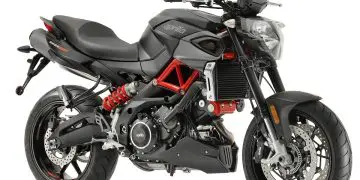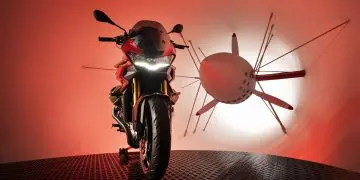While Western and Japanese motorcycle manufacturers are focusing on research and development of electric motorcycles, hydrogen engines, and other planet-preserving technologies under the threat of future bans on fossil fuel-powered machines, their emerging rivals in China are concentrating on high-performance combustion engines and rapidly narrowing the performance and technology gap with established brands. Kove is among these newcomers and, having already launched a 443cc four-cylinder sportbike, is now adding a simpler streetfighter version to its lineup.
The Kove 450RR sportbike went into production a year ago, after a quick development period that saw it initially released as a 399cc machine before a last-minute redesign and reengineering to the final 443cc form with 70 hp at 13,000 rpm, 39.3 Nm of peak torque, and a 16,000 rpm limit.
The new 450R is a streetfighter version of the 450RR, sharing the same four-cylinder engine and tubular steel frame, which alone weighs just 4.5 kg and helps the 450RR achieve its average weight of 165 kg. With the fairing removed, the new 450RR is even lighter, tipping the scales at just under 3164 kg, although its engine is slightly detuned, reducing the maximum power to 64.5 hp, according to Chinese homologation documentation.
While the 450RR is offered in two versions – a base model with a 41mm inverted fork from the Chinese brand Yu-an, along with axial-mounted front brakes, or in a higher specification “Performance” variant with KYB suspension and radial-mounted four-piston calipers – the 450RR has so far only been seen with the lower specification components. Like the 450RR, the brakes are from the Chinese manufacturer Taisco (ABS is standard).
Turning a sportbike into a roadster or streetfighter is a logical step, and one that many manufacturers adopt, but it is worth noting that Kove’s approach was deeper than simply removing the fairing. While the frame, engine, and suspension are replacement parts, the 450R’s fairing is completely new, including a different fuel tank design that seamlessly merges with two large air intakes on each side of the fork. These presumably feed the airbox to compensate for the loss of the nose-mounted air intake on the 450RR, which supposedly adds an additional 3 hp to the bike’s maximum power at high speeds.

The seat is slightly less extreme than the version used in the 450RR, although still far from luxurious for anyone wanting to ride as a passenger. However, the rider is well served with relatively wide and high handlebars and substantially lower foot pegs than the competition-oriented configuration of the 450RR. At the front is a small front fairing, similar to a mask, with heavily hooded LED lights and a TFT instrument panel in the same color as the 450RR on top.
There is still no obvious rival for the 450R. Kawasaki has not yet created a Z400 based on its Ninja ZX-4R, so riders looking for a small capacity streetfighter are limited to offerings from established two-cylinder or single-cylinder companies. Even in China, where there has been an explosion of four-cylinder motorcycles in the last year, most are in the 600cc to 700cc range, rather than competing with Kove in the sub-500cc range.
Although Kove is bringing several models to export markets, it is still unknown whether the 450RR or the 450R will be available in our market.








